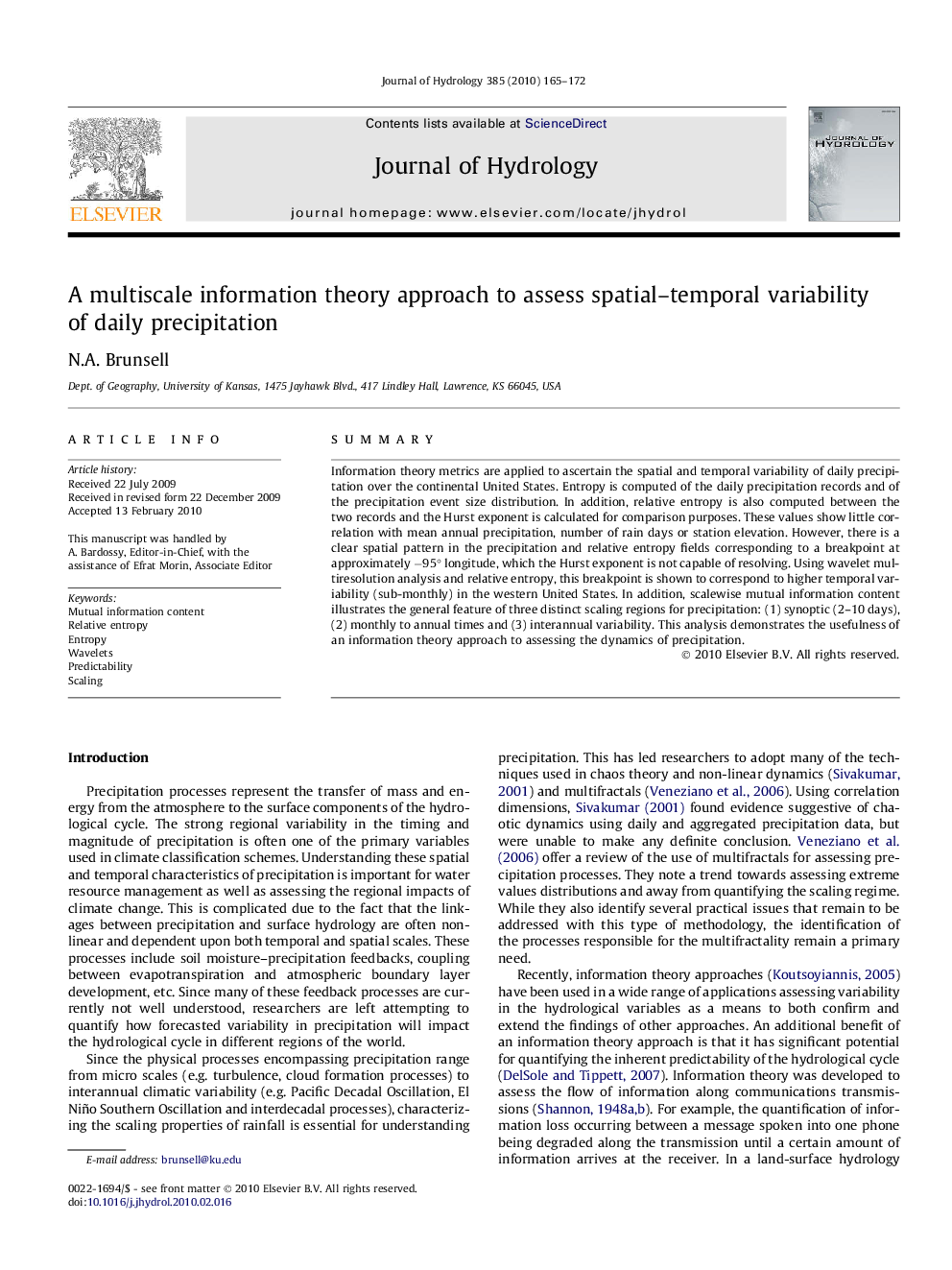| Article ID | Journal | Published Year | Pages | File Type |
|---|---|---|---|---|
| 4578423 | Journal of Hydrology | 2010 | 8 Pages |
SummaryInformation theory metrics are applied to ascertain the spatial and temporal variability of daily precipitation over the continental United States. Entropy is computed of the daily precipitation records and of the precipitation event size distribution. In addition, relative entropy is also computed between the two records and the Hurst exponent is calculated for comparison purposes. These values show little correlation with mean annual precipitation, number of rain days or station elevation. However, there is a clear spatial pattern in the precipitation and relative entropy fields corresponding to a breakpoint at approximately −95° longitude, which the Hurst exponent is not capable of resolving. Using wavelet multiresolution analysis and relative entropy, this breakpoint is shown to correspond to higher temporal variability (sub-monthly) in the western United States. In addition, scalewise mutual information content illustrates the general feature of three distinct scaling regions for precipitation: (1) synoptic (2–10 days), (2) monthly to annual times and (3) interannual variability. This analysis demonstrates the usefulness of an information theory approach to assessing the dynamics of precipitation.
